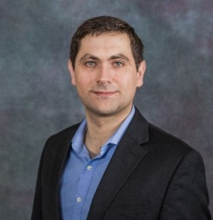EECS Seminar: Applied Electromagnetics & Artificial Intelligence: From Terahertz and Infrared Generation to Cancer Detection

Professor
Electrical and Computer Engineering
University of California, Davis
Abstract: This talk discusses some possibilities offered by applied electromagnetics, nanotechnology and artificial intelligence to address important challenges faced by our society. I will first overview our recent efforts to generate electromagnetic waves at terahertz (THz) and infrared (IR) frequencies. Common approaches at these frequencies suffer from important shortcomings, like being bulky, inefficient, or requiring high-intensity optical pumps, magnets, or cryogenic temperatures to operate. Cherenkov radiation (CR), a usually overlooked mechanism to generate light, has been limited to niche applications because it typically needs highly energetic electrons produced by nuclear reactors, particle accelerators, or radionuclide generators. I will describe a new approach to harness CR at long wavelengths by manipulating the coupling between drifting electrons and hyperbolic photonic modes in nanostructures made of 2D materials. This approach allows the efficient generation and control of CR using miniaturized devices by simply applying a DC bias. Our quantum-mechanical studies predict unrivaled photon emission in the THz and IR band, opening the door to a new type of solid-state THz and IR sources. Second, I will describe our on-going work merging machine learning, nano-micro electromechanical systems (NMEMS), and plasmonic metasurfaces to construct a label-free and portable platform able to diagnose and monitor early/late-stage head and neck cancer (HNC) using biofluids such as saliva and blood plasma. Instead of focusing on detecting specific oncometabolites, our approach employs the entire IR spectrum of the biofluid as biomarker for a specific condition. Machine learning algorithms revealed that a set of discrete and narrowband IR regions suffices to accurately classify the sample health status. To enable cancer detection using miniaturized and portable devices, we developed a new type of on-chip IR sensors merging NMEMS and ultrathin metasurfaces able to simultaneously exhibit spectrally-selective IR detection and ultra-sensitive performance at room temperature. Preliminary results show specificity, sensitivity and accuracy > 90% to segregate early/late cancer samples from healthy ones. I will finalize the talk outlining our current efforts on this platform as well as the potential applications of this technology to diagnose and monitor diseases beyond HNC, including many types of cancer, diabetes and heart-diseases.
Bio: J. Sebastian Gomez-Diaz is a professor in the Electrical and Computer Engineering Department at UC Davis, and the director of the Master Program. He developed his post-doctoral work in the Metamaterials & Plasmonic Research Laboratory at The University of Texas at Austin (US) and in the Laboratory of Electromagnetics and Acoustics at the École Polytechnique Fédéral de Lausanne (Switzerland). He obtained his Ph.D. from the Technical University of Cartagena (Spain), developing significant parts of his graduate work at the Fraunhofer Institute (Germany) and at the École Polytechnique de Montréal (Canada). His publication list includes >80 journal papers and >90 conference papers in areas related to applied electromagnetics, ranging from metamaterials and metasurfaces to plasmonics, 2D materials, biosensing, MEMS and other emerging fields in nanotechnology. As a PI, his research program has been funded by NSF, NIH, DoD-Army, SRC and the Keck Foundation. Gomez-Diaz received the 2018 NSF CAREER award and the 2017 Leopold Felsen Award for Excellence in Electrodynamics, among other distinctions.
Share
Upcoming Events
-
CEE Ph.D. Defense Announcement: Release, Transport and Fate of Per- and Polyfluoroalkyl Substances (PFAS) in Urban Watersheds
-
MSE 298 Seminar: Mechano-Electrochemical Phenomena at Ceramic Electrolyte Interfaces
-
MSE 298 Seminar: Innovation In Materials Science - An Industrial R&D Perspective
-
MSE 298 Seminar: Understanding the Impact of Grain Boundary Inclination on Grain Growth Using Modeling and Simulation and Experiments
-
EECS Seminar: Mixed Conductors for Bioelectronics
